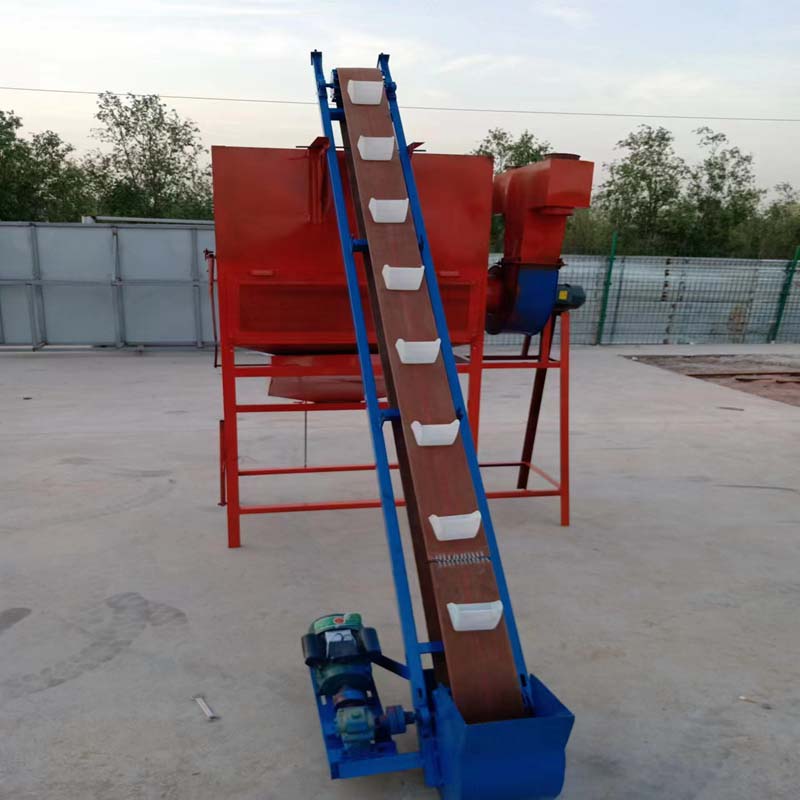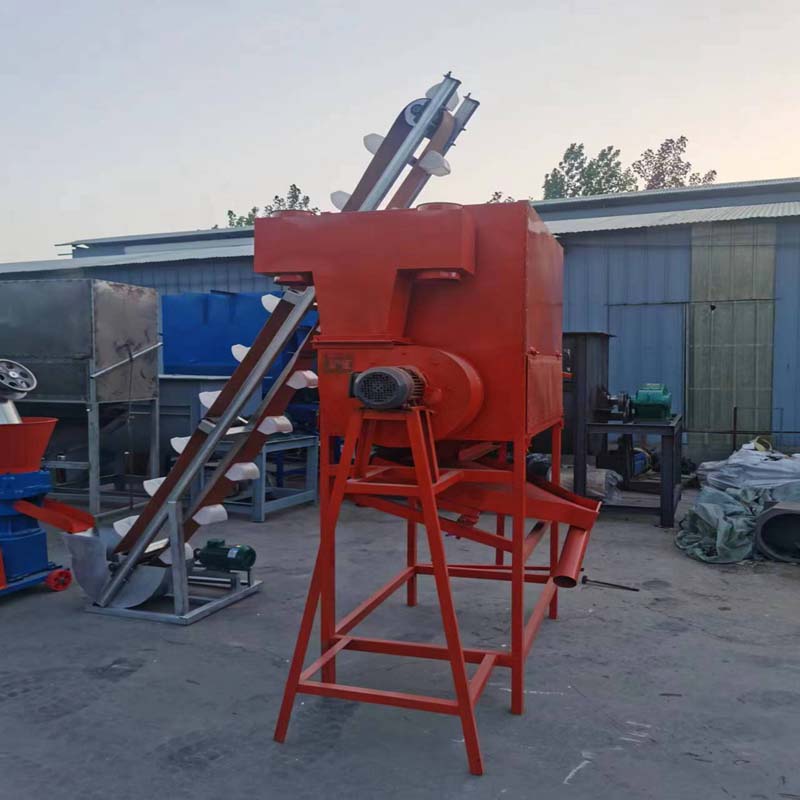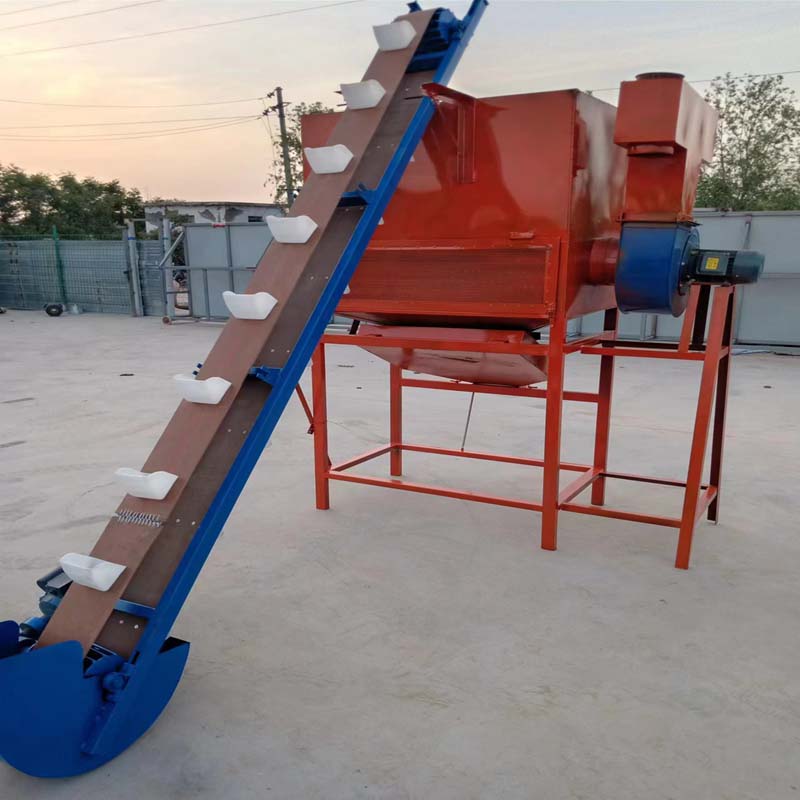Feeds Pellet Maker Machine – High Output & Low Energy
Nov . 07, 2025 12:10 Back to list
Feeds Pellet Maker Machine – High Output & Low Energy
Field Notes on a Feeds Pellet Maker Machine Ecosystem
I’ve toured more feed mills than I can count, and—funny enough—the conversation about better pellets usually ends up being about cooling and drying. In today’s plants, the Feeds Pellet Maker Machine doesn’t work in isolation; its wingman is a high-efficiency cooler/air dryer. That’s where Yize Machine’s Feed Pellet Cooling Machine from Anping County, Hengshui, quietly shines. Many customers tell me it’s the gear that fixes downstream headaches before they start.

What’s trending in feed lines
The trend is clear: higher throughput, lower energy per ton, and safer dust control. Plants are upgrading coolers to stabilize pellet hardness and reduce fines, because the Feeds Pellet Maker Machine can only do so much if pellets leave the die too hot and moist. Actually, better cooling has become the fastest ROI tweak in many facilities I visited this year.

Process flow and where the cooler fits
- Materials: poultry, ruminant, aquafeed pellets; biomass pellets; mixed grains.
- Method: pellets exit the Feeds Pellet Maker Machine at ~70–90°C, enter the air dryer/cooler to shed heat and moisture quickly.
- Exchange: stable fabric curtain inside the cylinder improves mass/heat transfer; no sticky build-up thanks to internal cleaning structures.
- Testing: moisture to ISO 6496/ASTM E871; noise to ISO 3746; airflow verified by pitot traverse; fines measured by sieve analysis.
- Service life: key internals ≈ 7–10 years in normal duty (real-world use may vary).
- Industries: feed mills, biomass fuel, pet food, premix plants.
Why operators like it
Overload resistance, steady feeding/discharge, and low power draw. In fact, the redesigned inlet stops the classic “plug → surge → dust” cycle that haunts older drum dryers. I guess the biggest surprise is the way it trims the dust collector’s load—airflow is smoother, so filters breathe easier.

Key specifications (typical models)
| Model | Capacity (t/h) | Power (kW) | Airflow (m³/h) | Temp Drop (°C) | Dimensions (mm) | Service Life |
|---|---|---|---|---|---|---|
| YZ-C600 | 1.5–3.0 | 7.5 | ≈8,000 | 70→10–15 | 2200×1600×2100 | ≈7 yrs |
| YZ-C900 | 3.0–6.0 | 11 | ≈14,000 | 80→10–15 | 3000×2200×2600 | 8–10 yrs |
Note: values are indicative; real-world loads, ambient RH, and pellet formulation will nudge results.
Vendor snapshot: Yize vs alternatives
| Vendor | Strengths | Lead Time | After-Sales | Certs | Price |
|---|---|---|---|---|---|
| Yize Machine (Hebei, China) | Overload-resistant design; steady feed/discharge; low dust load | 3–6 weeks | Remote + onsite; spare kits | ISO 9001, CE | Mid |
| Regional Brand A | Good insulation; compact footprint | 6–10 weeks | Remote only | CE | Mid-High |

Customization, QC, and real results
- Customization: airflow fans, stainless contact parts, anti-stick internals for viscous recipes, ATEX/NFPA dust options.
- QC/Testing: FAT with moisture/temperature decay curves; vibration per ISO 10816; electrical to EN 60204-1.
- Case snippet: a 5 t/h poultry line cut fines by ≈22% and dropped baghouse ΔP by ~12% after swap-in—operators said pellet durability improved “without touching the Feeds Pellet Maker Machine.”
Origin: Jinwang Western Street, Industrial Zone, Anping County, Hengshui City, Hebei Province, China.
Certifications and standards referenced
ISO 9001:2015 quality system; CE Machinery Directive compliance; ISO 3746 noise; EN 60204-1 electrical safety; GB/T 191 packaging; NFPA 61 dust hazard guidance.
- ISO 9001:2015 – Quality management systems
- 2006/42/EC – EU Machinery Directive (CE)
- ISO 3746 – Acoustics: sound power determination
- EN 60204-1 – Safety of machinery: Electrical equipment
- GB/T 191 – Packaging, storage and transportation marks
- NFPA 61 – Standard for the Prevention of Fires and Dust Explosions in Agricultural and Food Processing Facilities
-
Efficient & Sustainable Chick Brooding Cage Systems for Modern Poultry Farming
NewsNov.24,2025
-
Cage for Chick: Optimizing Poultry Care for Global Food Security
NewsNov.23,2025
-
Baby Chicks Cage – Global Solutions for Sustainable Poultry Farming
NewsNov.22,2025
-
Baby Chick Cage: The Essential Guide to Brooding Solutions for Poultry Farmers
NewsNov.22,2025
-
Understanding Square Grain Silos: Global Impact, Benefits, and Trends
NewsNov.21,2025
-
Automatic Feeding Line System-Anping County Yize Metal Products Co., Ltd.|Automated Feeding&Watering
NewsNov.21,2025






